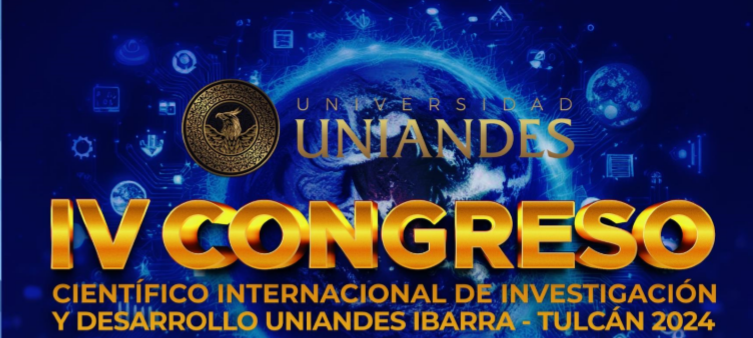Selective attention as a basis for learning in students at UNIANDES University
Abstract
Sustained attention requires an observer to maintain involvement in a specific task for a prolonged period of time, while selective attention allows individuals to extract relevant information, ignoring distracting stimuli; the previous attentional system would be an executive mechanism, which would make the object being attended to and its properties conscious, to ensure that the established goals are met. One of the problems that affects university students is related to selective attention difficulties, as they are easily distracted; the selection of internal information of the human processing system is also involved, information in the form of knowledge and its interrelationships or selective attention, understood as the ability to separate the relevant from the irrelevant. The objective of the research was to characterize selective attention in the learning process of Dentistry students at UNIANDES University. It was concluded that students do not have study habits and there are selective attention difficulties; they do not adapt to academic demands and choose to do what is easiest; they do not manage to relate their knowledge with the new knowledge acquired, nor organize the new information; they do not seek new learning methods to overcome their teaching results, nor sustain attention for long enough, which is more evident in difficult contents.
Keywords: selective attention, learning, knowledge, academic performance
Downloads
References
Pawlowski J. Test de Atención d2: Consistencia interna, estabilidad temporal y evidencias de validez. Rev Costarric Psic. 2020;39(2)
Castillo Moreno A, Paternina Marín A.Redes atencionales y sistema visual selectivo.Univ Psychol. 2006;5(2)
Carpio Lozada B. Desarrollo de la atención selectiva a través del juego en estudiantes de educación superior. Comuni@cción.2020;11(2).
Pizarro Pino D,Fuentes Vilugrón G, Lagos Hernández R.Programa de desarrollo cognitivo y motor para atención selectiva y sostenida de niños y niñas con TDAH.Rev Educ.2019;43(2),
Introzzi I, Aydmune Y, Zamora E.Mecanismos de desarrollo de la atención selectiva en población infantil. CES Psicología.2019; 12(3):105-118
Santiago Resett, 2021, Relación entre la atención y el rendimiento escolar en niños y adolescentes Rev Costarric Psic.2021;40(1)
Vargas M, Wildora G, Méndez Vergaray J, Duran P, Jaysson D. La atención en el aprendizaje de la comprensión lectora en estudiantes de primaria. Revisión teórica. CIEG, Revista arbitrada del centro de investigación y estudios gerenciales. 2021; 50: jul-agos: 116-127: Disponible en: https://revista.grupocieg.org/wp-content/uploads/2021/06/Ed.50116-127-Mesia-et-al.pdf
Estrada Trespalacios Simón Rodríguez O,Jackson Rodríguez K .Los conceptos de relación y la atención selectiva como predictores del conocimiento matemático informal.Panorama.2022;16(31)
Ulloa Masache EJ,Estévez F.Diseño y validación de un paradigma para evaluar la atención selectiva, utilizando el software de código abierto “PsychoPy”, aplicable a la Resonancia Magnética Funcional. Rev Ecuat Neurol.2020;29(3).
Ballesteros S. La atención selectiva modula el procesamiento de la información y la memoria implícita. Acción Psicol.2014;11(1):7-20.
Chaves Peña DE, Yáñez Cana J.Los modos de la atención. .Sophia.2021:30
Galindo G, Solovieva Y, Machinskaya R, Quintanar L. Atención selectiva visual en el procesamiento de letras: un estudio comparativo. Rev Estudios Lectura.2016;15:69-80
Villanueva Gutiérrez OE, López López LI. La atención selectiva del docente en los procesos de planeación curricular, aprendizaje y evaluación. Diálogos sobre educación. Temas actuales en investigación educativa,2019; 10(19). Disponible en: https://doi.org/10.32870/dse.v0i19.489
Published
How to Cite
Issue
Section
License
ACCESS AND DISTRIBUTION POLICY
All published articles are open access contributions, which are distributed under the terms of the Creative Commons Attribution-NonCommercial 4.0 License which permits unrestricted non-commercial use, distribution and reproduction in any medium, provided that the primary source of publication is properly cited.




